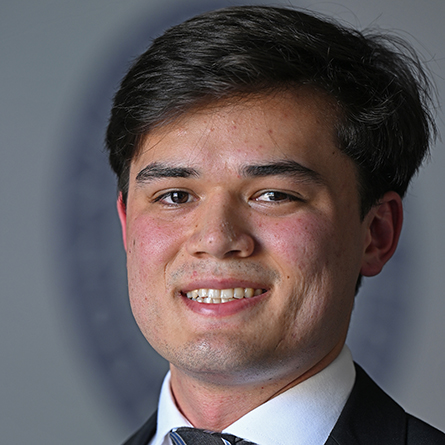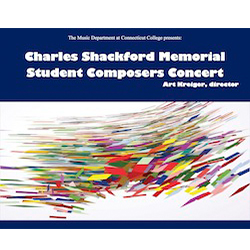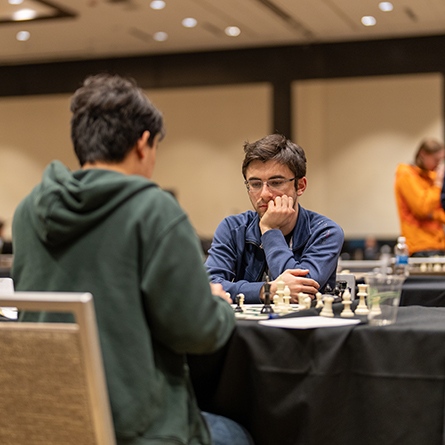
Music students premiere new works at annual composers concert
Seventeen student composers premiered new electronic and acoustic works at the annual Charles Shackford Memorial Student Composers Concert Dec. 10. The pieces, performed by music students and well received by a captive audiences, were developed under the mentorship of Art Kreiger, the Sylvia Pasternack Marx Professor of Music and a celebrated composer who has performed worldwide.
Listen below to a selection of five of the pieces performed at the event.
“Orbit” by Ned Rodgers '16
Rogers produced “Orbit” using technologically advanced software and “old school analog synths,” as he describes them. “The old analog sound is what gives the piece its richness, but the software allowed me to precisely perfect the sounds when needed.” The piece melds together numerous different styles, ranging from early tape music to modern dance music. “I’m glad I got to hear the piece live, the grandiosity from the sound was communicated well. But hearing it live made me crave something more,” Rodgers said, adding that he hopes to have the piece perform on an even larger sound system.
“Remission” by Ben Webber '16
In writing “Remission” for piano and clarinet, Webber drew inspiration from the concepts of tonal modulation, which he studied in his music theory classes. “I love the math behind music theory, so I’ll try to compose entire sections of songs without listening at all and just trusting the patterns and numbers.” The concert was the first time Webber had heard his piece in full. “I had written the piece originally around 100 BPM, and the performers decided to play it around 70. Even though I knew how the piece went, it still felt like a very new and exciting experience. It's a very personal experience to know that a group of incredible musicians sat down and studied your music, and then made it their own,” he said.
“Spin” by Haley Gowland '17
“Spin,” which epitomizes the experimental and creative nature of electronic music, was the culmination of several weeks of work in Kreiger's electroacoustic class. Gowland recorded objects, like a quarter, spinning on different surfaces — on a table, on bubble wrap, on a metal chair and even on a flattened bag of potato chips. “I then manipulated the sounds using AudioSuite on ProTools to change the pitch, duration and other qualities of the original tracks,” Gowland said.
“Electronic Spiel” by Elias Aquino '16
Aquino’s inspiration came from listening to music by the Second Viennese School, a famed group of early 20th century composers. He aimed to capture the style of these artists, while still letting his own personality show through. “I worked out the melodies at the keyboard … then adjusted them to include the 12 notes of a chromatic scale to produce a row. I make sure that the lines are singable, to hear each timbre and to probe for high and low points in the dynamics and emotion of each melody,” he said.
“Empty” by Anna Westbrook '16
“Empty,” Westbrook writes, is part of a larger work, her original musical, “Isabel and the Runaway Train,” The piece features two vocalists playing the role of Isabel’s parents. “They express their frustration with themselves, each other, and their daughter after she runs away from home. I accompanied the singers with piano, clarinet and violin,” she explains. “The clarinet and the violin parts were written as if they were an extension of the argument, often doubling with the singers. I wrote the piano part to represent the argument itself, giving it a very driving rhythm, changing meters and a wide range of dynamics.”
December 18, 2014

